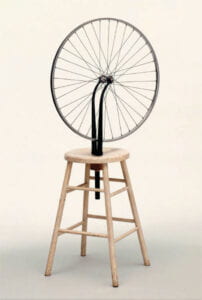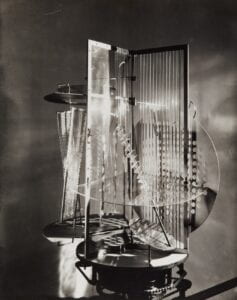The words “machine art” and “kinetic art” have been historically used to describe different aspects of art related to machines and movement. Over time, their meanings have changed as technology and art have evolved. However, these terms are still used to describe artworks that involve machines, movement, and the relationship between art and technology.
In the early 1900s, “machine art” emerged as a response to the growth of industry and the increasing presence of machines in society. It referred to artworks that took inspiration from machines, their appearance, and their impact on people’s lives. Machine art focused on the mechanical and practical aspects of machines and how they influenced artistic expression, and it also included artistic expressions that explored the artistic and symbolic aspects of machines. This included looking at the social meanings of technology and using mechanics to describe elements of human culture and psychology. Artists like Francis Picabia, Marcel Duchamp, and Jean Tinguely were associated with this machine aesthetic. Later in the 20th century, “kinetic art” became popular as a specific type of machine art. Kinetic art involved artworks that had actual movement, either through mechanical methods or by using light, sound, or other elements. Kinetic artists aimed to explore the relationship between art, technology, and how people perceive things. They wanted to engage viewers on a sensory level, creating immersive and interactive experiences that challenged the idea of art being still and unchanging. Kinetic art expanded the possibilities of sculpture by incorporating motion as a key element. Artists such as Jean Tinguely, Alexander Calder, and Victor Vasarely played significant roles in the development of kinetic art.
Over time, the meanings of these terms have changed as technology has advanced and art has evolved. The term “machine art” has become broader and more inclusive. It now includes many different ways that artists can use machines, technology, and their cultural impact in their work. This can include things like digital art, art made with computers, and artworks that explore how machines affect people’s lives today. The author suggests that machines can be seen as a specific kind of relationship between people and the structures or devices that shape how we think and act. This contains technical, social, and psychological aspects. The author also talks about how gender plays a role in how people relate to technology, looking at how men and women have different access and use of technical systems. Similarly, “kinetic art” has also changed and grown. Artists can now use electronics, robots, and interactive elements to make art that is dynamic and immersive. It’s not just about physical movement anymore, but also about incorporating digital and interactive technologies into the artwork.
One of the artists mentioned in the article is Marcel Duchamp. He was a prominent artist associated with the Dada and Surrealist movements, known for his innovative approach to art and his exploration of the relationship between art and technology. His work “Fountain” (1917), a urinal signed with the pseudonym “R. Mutt,” challenges the traditional notions of artistic ingenuity and provoke discussions about the value and meaning of art in a consumerist society. By presenting ordinary, manufactured objects as art, Duchamp raises questions about the role and significance of machines in society. This highly aligns with the aspect of associative references to social meanings, as mentioned by Broeckmann in his book. Another famous work of Duchamp is “Bicycle Wheel” (1913). It consists of a bicycle wheel mounted on a stool, creating a hybrid object. Duchamp’s choice of an everyday functional object and its presentation as an artwork highlights the aesthetic qualities of the machine’s design, focusing on its form, balance, and visual appeal, which corresponds with the aspect of formalist appraisal of functional forms.


The other artist that I found interesting was Laszlo Moholy-Nagy. His works demonstrate a strong connection to technology and embrace the aesthetic possibilities of machines. In his painting “Construction AL6” (1928), he combines geometric forms and industrial materials to create an abstract composition that symbolizes the modern machine age and the technological advancements of the time, which also follows the aspect of associative references to social meanings. Meanwhile, his “Licht-Raum-Modulator” (Light-Space Modulator, 1930) is an example of a kinetic sculpture. It consists of rotating and reflecting elements that manipulate light and shadow, transforming the surrounding space. Through this play with kinetic functions, Moholy-Nagy expands the expressive potential of sculpture and blurs the boundaries between art and technology.



Leave a Reply